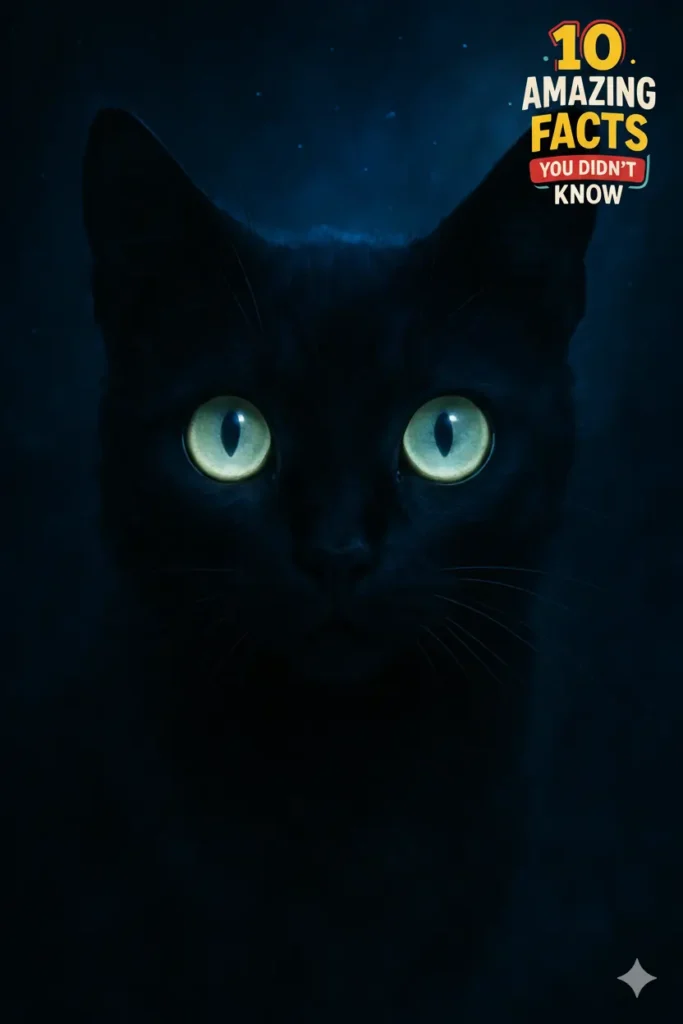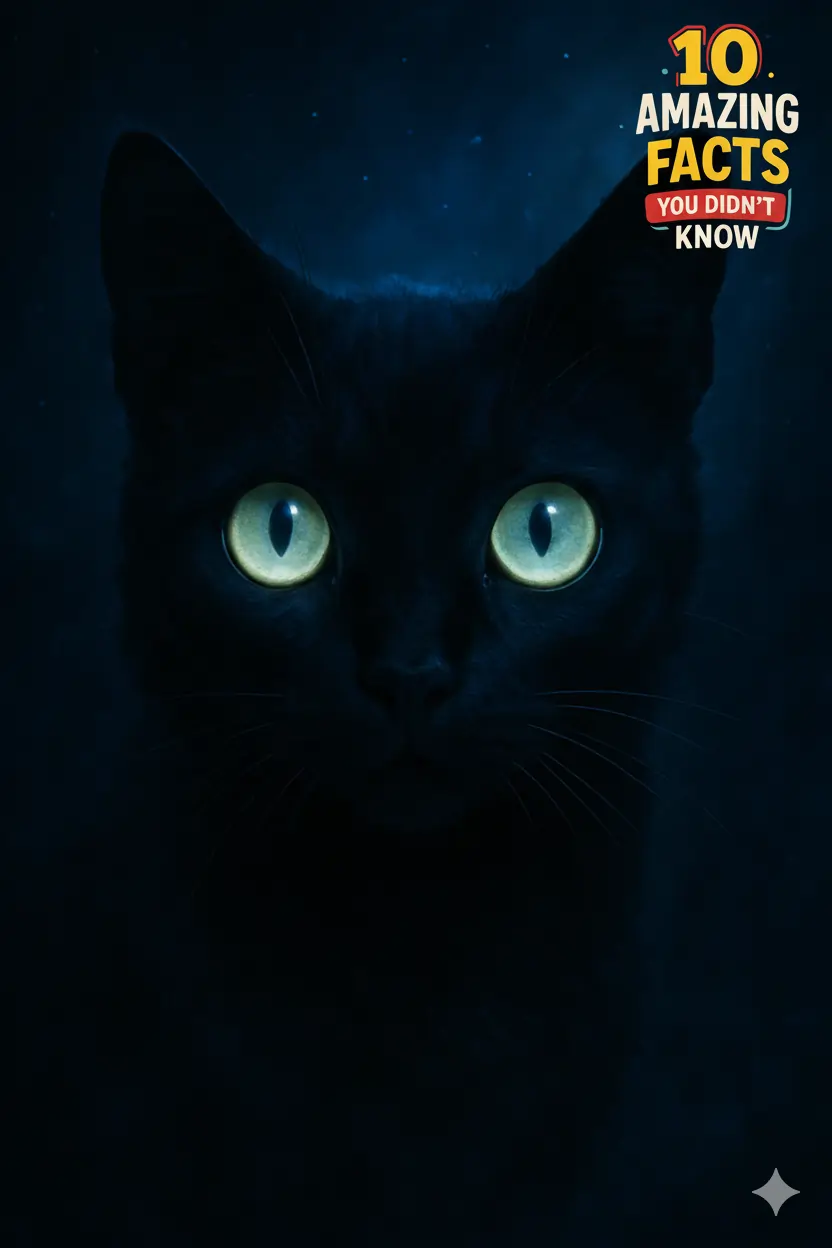Can Cats Really See in Darkness? Surprising Facts About Feline Night Vision
When the lights go out, most of us stumble, squint, and reach for a flashlight. Cats, on the other hand, move gracefully as if darkness doesn’t exist. But how true is the popular belief that cats can see in darkness? Do they have supernatural night vision, or is it just an evolutionary trick?
In this article, we’ll dive into the fascinating world of cat night vision, uncovering the science, myths, and amazing facts about how felines see the world when the sun goes down. By the end, you’ll not only understand your cat better—you’ll also discover why subscribing to our site gives you access to even more hidden secrets about the animal world.
The Myth vs. The Science of Cat Night Vision
The myth that cats can see in total darkness has been around for centuries. Ancient Egyptians even worshipped cats partly because of their mysterious, glowing eyes that seemed to pierce the night.
The truth? Cats cannot see in complete darkness. Like humans, they need at least some light to see. However, their eyes are far better equipped than ours to make the most out of even the tiniest light source.
According to researchers from the University of Wisconsin’s School of Veterinary Medicine, cats’ eyes are about six times more sensitive to low light than human eyes. That’s why they can slip through the shadows while we’re still fumbling in the dark.
How Cats See in the Dark
Several biological adaptations give cats their legendary night vision:
1. Oversized Pupils
When light is scarce, your cat’s pupils expand to enormous circles, almost covering the entire visible eye. This allows them to capture every photon of light available—like turning their eyes into natural wide-angle lenses.
2. The Tapetum Lucidum: Nature’s Mirror
One of the coolest features of feline vision is the tapetum lucidum, a reflective layer of cells behind the retina. It works like a built-in night-vision enhancer by reflecting light back through the eye, giving the retina a second chance to capture it. This is also why cat eyes glow eerily in the dark when a flashlight or car beam hits them.
3. More Rod Cells, Fewer Cone Cells
Cats’ eyes are packed with rod cells—specialized for detecting light and motion—rather than cone cells, which are responsible for color vision. This means cats see better at night but sacrifice sharp color detail. To them, the world is muted in shades of blue and gray but alive with movement.
Cats vs. Humans: Who Wins the Night Vision Contest?
If a human could see a candle flame at 100 feet, a cat could spot the same flame from more than 300 feet away. Impressive, right?
But there’s a trade-off. Humans win in daylight, seeing a broader range of colors and sharper details. Cats, however, dominate in low light, which explains why they’re masters of nighttime hunting.
Do Cats See in Total Darkness?
Here’s where myth meets reality:
-
No, cats cannot see in pitch-black conditions where no light exists.
-
Yes, cats can see far better than humans in dim or twilight conditions, such as moonlight, starlight, or even light leaking from under a door.
Think of it this way: while you’d trip over the furniture at midnight, your cat would leap gracefully onto the couch without missing a beat.
Why Do Cats Need Superior Night Vision?
The answer lies in their ancestry. Cats are crepuscular hunters, meaning they are most active during dawn and dusk. These are the hours when rodents and small prey are most active, and having superior low-light vision gave wild cats an evolutionary edge.
Even your spoiled indoor tabby still carries this biological advantage. That’s why your cat loves sprinting through the hallway at 3 a.m.—their instincts tell them it’s prime hunting time!
Fun Facts About Cat Eyes That Will Amaze You
-
Their pupils can open three times wider than human pupils.
-
Cats’ field of vision is about 200 degrees compared to our 180, giving them a wider “radar” of their surroundings.
-
Their glowing eyes aren’t magic—just science! That shine is the tapetum lucidum at work.
-
Kittens are born with blue eyes, and their full vision develops after about 10 weeks.
-
Some studies suggest cats may even detect certain ultraviolet light wavelengths, giving them a perception of the world humans will never experience.
Common Myths About Cats Seeing in Darkness
-
Myth: Cats see perfectly in pitch black.
Reality: They need at least some light to see. -
Myth: Cats see the world in full color like humans.
Reality: They see mostly shades of blue and gray, with limited ability to detect reds and greens. -
Myth: Cats’ glowing eyes are supernatural.
Reality: It’s a reflection caused by the tapetum lucidum.
Why This Matters for Cat Owners
Understanding how your cat sees at night helps you:
-
Appreciate why your cat is most playful at dawn and dusk.
-
Realize why they sometimes “attack shadows” or dart at things you can’t see—they’re spotting movements invisible to your eyes.
-
Create safer environments by avoiding obstacles or dangerous objects where your cat loves to roam in dim light.
Want More Incredible Cat Secrets?
This article is just the beginning. At 10AmazingFactsUDidntKnow.com, we dig deeper into the mysteries of cats, animals, science, and hidden wonders that most people overlook.
👉 Subscribe today to unlock exclusive premium content, access behind-the-scenes videos, and become part of a community that thrives on curiosity.
👉 Don’t miss our YouTube channel, where we share visually stunning fact videos designed to blow your mind.
Remember—knowledge isn’t just power, it’s fun. And your next “aha!” moment is only one subscription away.

FAQs About Cats Seeing in Darkness
1. Can cats see in complete darkness?
No. Cats need at least a small amount of light, such as moonlight or starlight, to see.
2. Do cats have better vision than humans at night?
Yes. Cats’ eyes are about six times more sensitive to low light compared to human eyes.
3. Why do cat eyes glow in the dark?
Because of the tapetum lucidum, a reflective layer behind the retina that bounces light back and enhances night vision.
4. Can cats see colors?
Cats see some colors, mainly shades of blue and gray. They cannot perceive reds and greens as humans do.
5. Why do cats run around at night?
Their instincts as crepuscular hunters drive them to be most active during low-light hours like dawn and dusk.
Final Thought
Your cat’s eyes aren’t just windows to their soul—they’re finely tuned instruments of survival, designed to thrive in the shadows. The next time you see your furry friend glowing at you from the dark, remember: you’re looking at one of nature’s most incredible adaptations.
✨ If this article fascinated you, subscribe now to discover more amazing facts you didn’t know—and join thousands of curious minds unlocking secrets daily!

